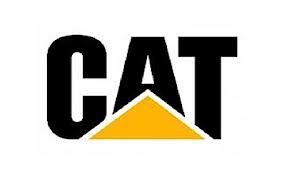Jim Chanos, one of the world’s most well-known short sellers, has chosen a new target for his short position. It is Caterpillar Inc. (NYSE:CAT), the largest maker of construction and mining equipment in the world. Right after the news, Caterpillar dropped more than 2% to below $86 per share.

Declining global mining capital expenditures
There are several reasons for Jim Chanos to be bearish about Caterpillar Inc. (NYSE:CAT). First is the decline in the overall commodities market, lead by the slow down of the Chinese construction boom. He commented that the mining industry has gone through the super-cycle, resulting in significant growth in global mining capital expenditures.
In the period of 1990-2001, global mining capital expenditures had grown at around 8% per year, and in the last eleven years, the growth rate has shot up to as high as 24%, from only $14 billion to $145 billion. He estimated that around a third of the global mining capital expenditures were coming from equipment. That was a huge number for Caterpillar Inc. (NYSE:CAT).
Caterpillar Inc. (NYSE:CAT) has significant exposure to the global mining industry. In 2012, it generated around $21.16 billion, accounting for 32.7% of the total revenue, from the Resource Industries segment. This segment is also the largest profit contributor, with $4.32 billion in 2012 segment profit, representing as much as 45.2% of the total operating profit.
The company’s board also expects that global mining capital expenditures would decline, but gradually, at only 10%-15% per year. However, Jim Chanos does not think that the reversion to the industry’s historical mean would be smooth.
Caterpillar acquisition accounting
Moreover, Jim Chanos expressed his worries about how Caterpillar Inc. (NYSE:CAT) accounted for its acquisitions, including the huge $7.6 billion buyout of the mining equipment firm Bucyrus. Dating back to 2010, Caterpillar paid as much as 23 times earnings for Bucyrus, anticipating that it would benefit from “the rapid growth in China, India, Brazil and other emerging markets”.
Recently, the company had to write off $580 million on an $886 million acquisition of ERA Mining Machinery in China. For Chanos, it was a sign for caution. He said: “Whenever you see a company claim earnings synergies when buying another company and then write down its net assets to below zero, you have to say either that company never earned money or you’re being overly aggressive in your acquisition accounting. You know that’s one of my favorites. Looking at companies that write down net tangible assets to zero or negative when they buy a company.”
As of March 2013, goodwill and intangible assets still accounted for 58.6% of its total equity.
How about Joy Global Inc. (NYSE:JOY) and Deere?
At $86.60 per share, Caterpillar is worth $56.9 billion on the market. The market values the company at around 9 times its trailing EBITDA (earnings before interest, taxes, depreciation, and amortization). Compared to its peers Joy Global Inc. (NYSE:JOY) and Deere & Company (NYSE:DE), Caterpillar does not seem to be so cheap.
Joy Global Inc. (NYSE:JOY) is the cheapest among the three. At $50.90 per share, Joy Global is worth $5.4 billion on the market. The market values Joy Global at 5.13 times its trailing EBITDA. Joy Global focuses its business mainly on Mining Machinery and Equipment, generating more than $5.66 billion in revenue and $1.1 billion in operating income. Thus, Joy Global is expected to get hit hard when global mining capital expenditures fall off the cliff. Joy Global also has a huge amount of goodwill and intangible assets, representing as much as 68.8% of its total equity.
Deere & Company (NYSE:DE) has the highest valuation among the three companies. It is trading at $83.60 per share with a total market cap of $32.44 billion. It has the highest EBITDA multiple at 10.16. Deere also seems to be the safest because of its least exposure to the global mining industry. Most of its revenue, $27.12 billion, or nearly 81% of the total revenue, was generated from the Agriculture and Turf segment.
This segment was also the largest profit contributor, with more than $3.92 billion in operating income in 2012. For the full year, the company expects that equipment sales growth would be around 6% while net income might come in at $3.3 billion.
My Foolish take
Caterpillar and Joy Global, with a significant exposure to declining global mining capital expenditures, would experience a lot of headwinds in the near future. Moreover, their high levels of goodwill and intangible assets are quite vulnerable to any future write-downs. Jim Chanos mentioned that Caterpillar is a great company, but it is levered to the wrong products at the wrong time.
The article Should We Avoid Caterpillar Now? originally appeared on Fool.com and is written by Anh Hoang.
Anh HOANG has no position in any stocks mentioned. The Motley Fool has no position in any of the stocks mentioned. Anh is a member of The Motley Fool Blog Network — entries represent the personal opinion of the blogger and are not formally edited.
Copyright © 1995 – 2013 The Motley Fool, LLC. All rights reserved. The Motley Fool has a disclosure policy.




